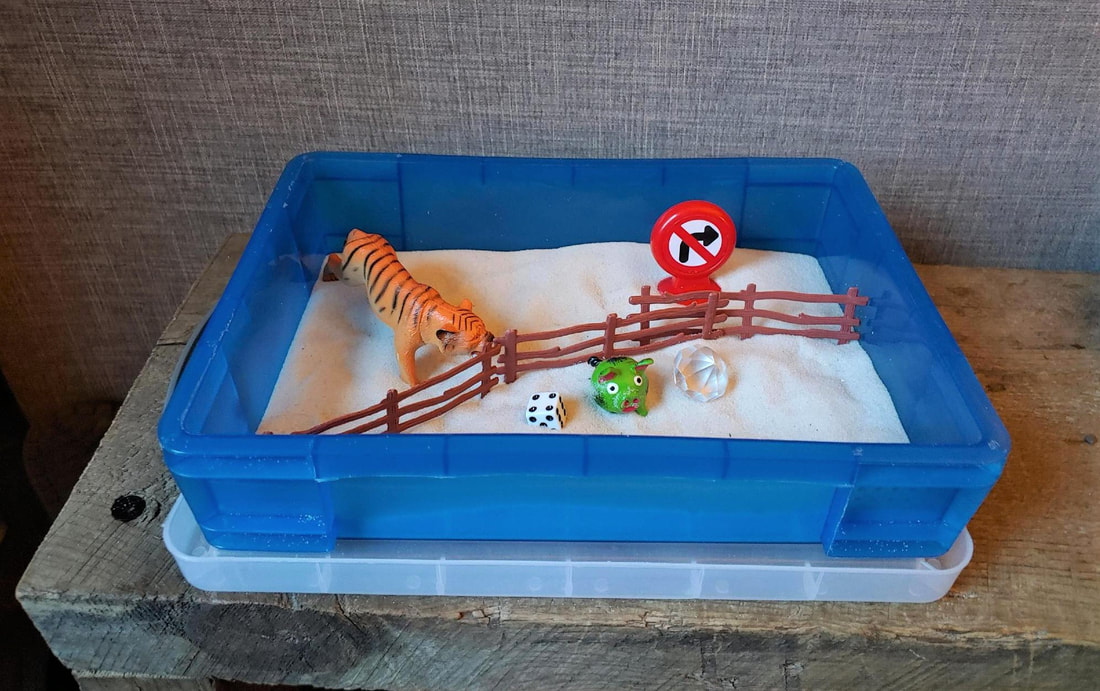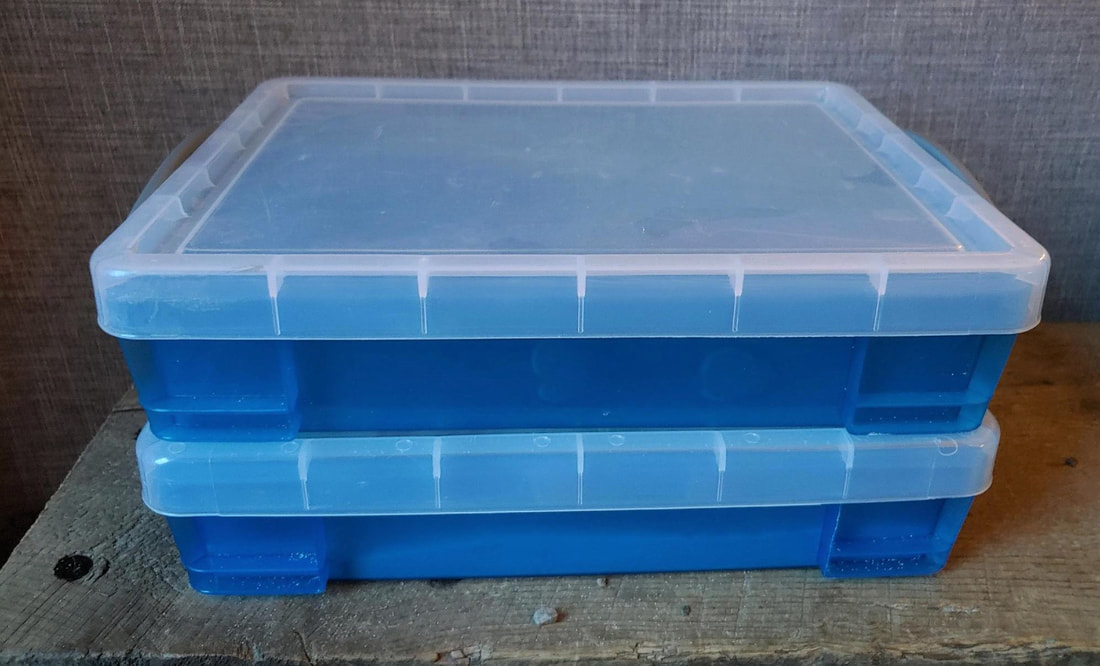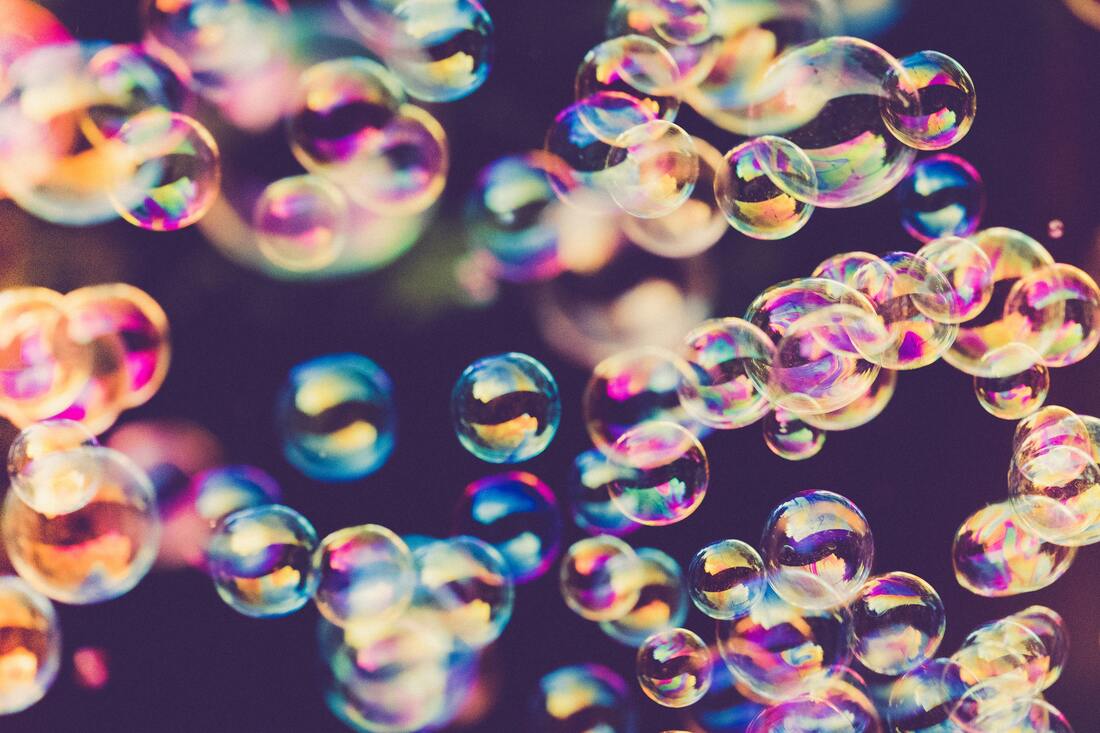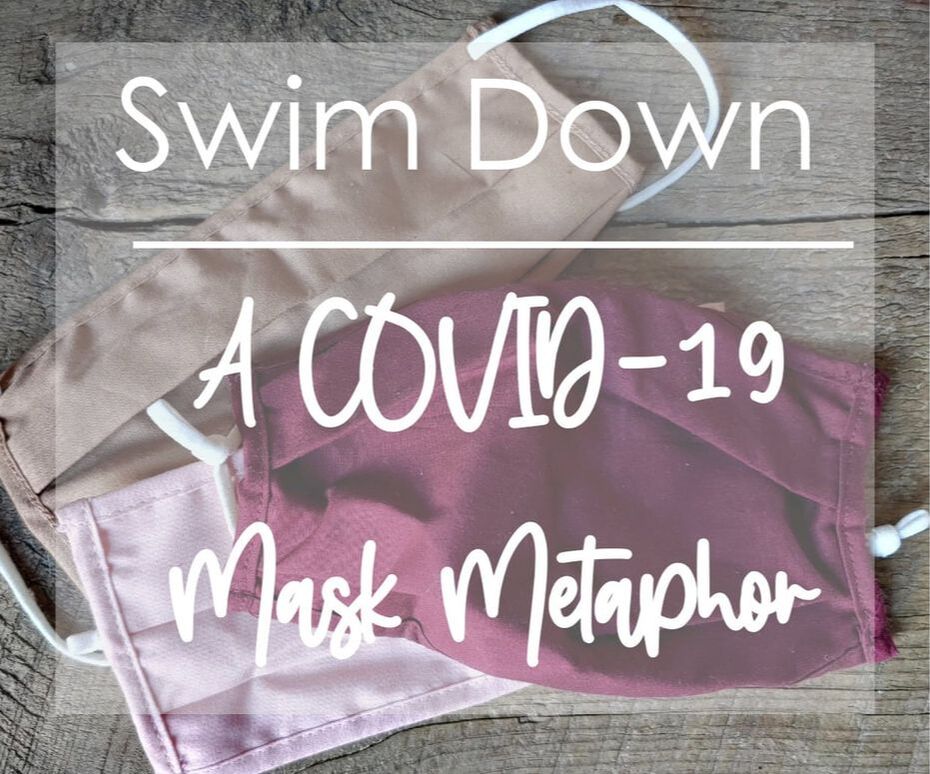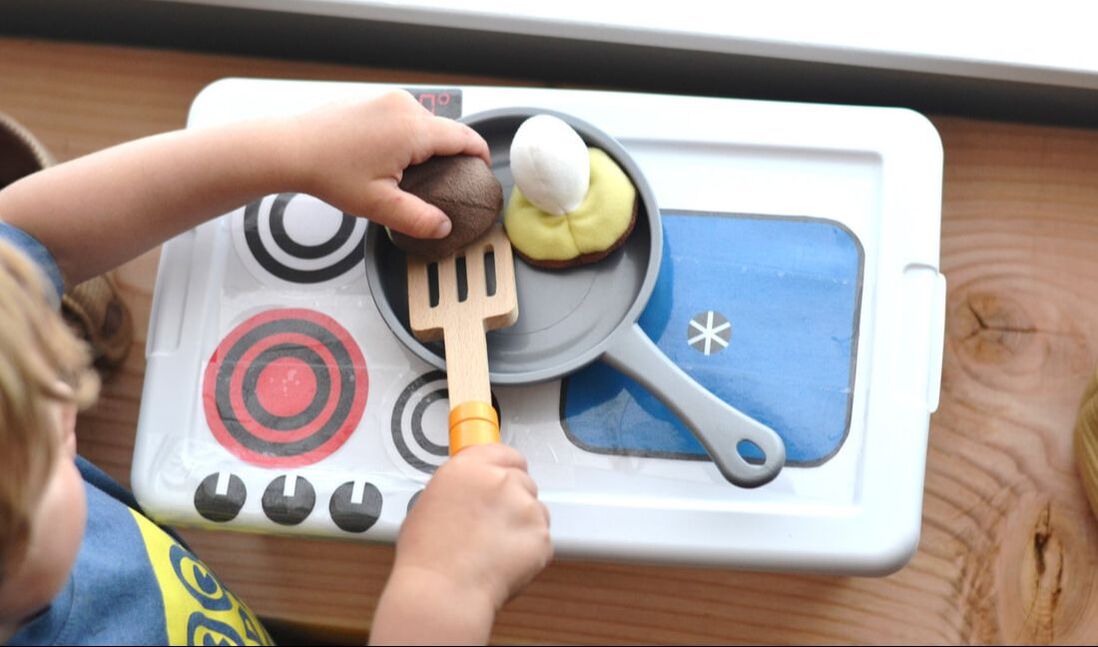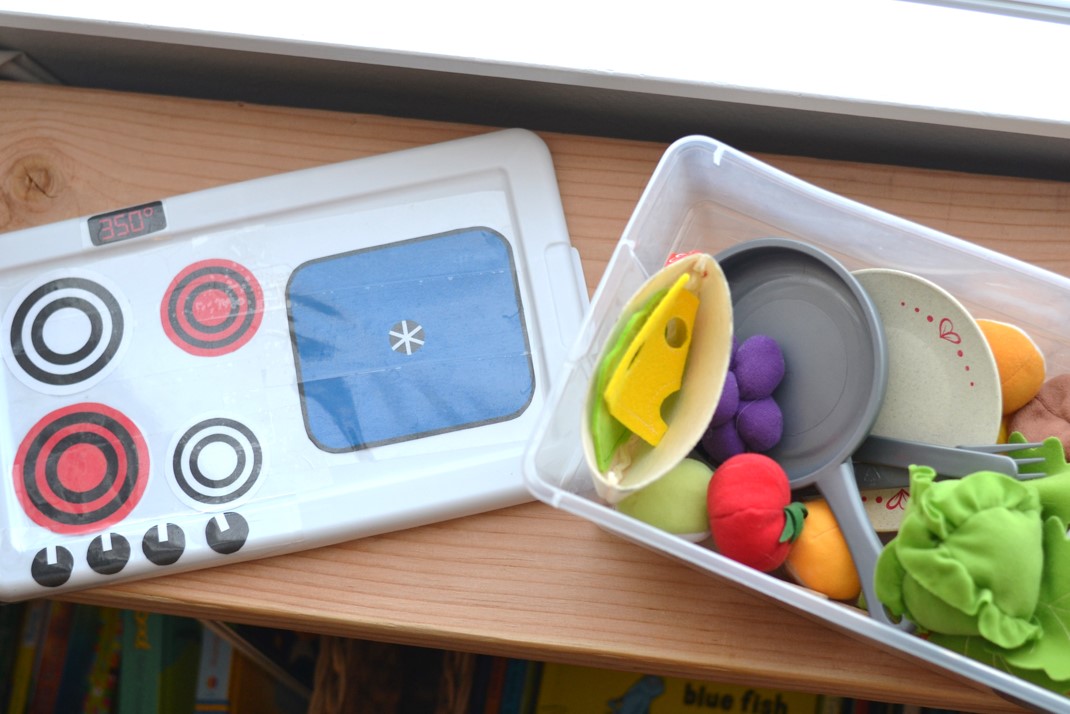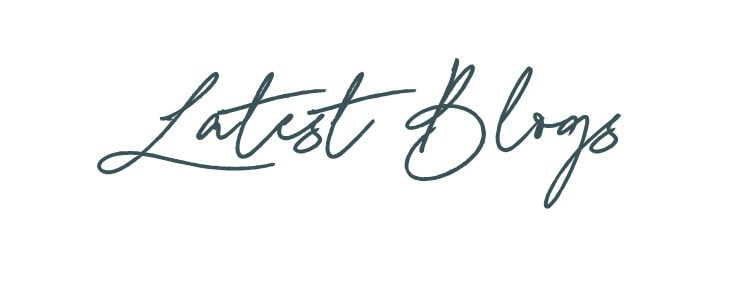|
A Sand Tray Therapist’s dilemma in 2020…if I am returning to office how do I both keep my clients safe AND provide the optimal tools for emotional expression, processing, and healing? I can’t tell you how many times that this has gone through my mind. For some therapists they are leaving the sand all together and finding alternative ways to engage with clients. I can’t tell you how much this makes my heart hurt as I know there is so much POWER in the sand. Check out my articles HERE for creative ways to use sand tray for virtual sessions. BUT this isn’t about virtual, this is about the real life in office work of Sand Tray. Let’s focus! For some they are sanitizing between clients like this three part video series HERE, HERE, and HERE, or using UV lights or wands to disinfect. A billion years ago when I was in office at the cusp of everything shutting down, that was me. The disinfecting spray between clients that is. I can tell you – it is truly exhausting and leaves your sand a bit wet and less than idea if you have back to back clients who want to work with the sand. Who can relate? Enter a third option: individual sand tray kits! I am a bit sand tray obsessed, so I actually have a stockpile of these AHHH-mazing square storage totes (the ezy Karton Storage Container 6.3QT to be exact) for $2.00 at Target. TWO DOLLARS! Okay, now you can understand why I grabbed 15 or so ish of these when they were still on the shelves. But alas they are out of stock everywhere I have goggled. SO when the topic of how to navigate returning to in person sessions (now or in the future) came up in one of my group consults I wanted to create a round up of all the different ways to play (inexpensively of course) in the sand tray with individual sand tray kits. I also LOVE this idea for sending kits home for children to engage with and am in the process of creating take home "loaner" sand trays. With this concept you could either have a mini-sand tray for each client that only they use or touch, or several kits that get sanitized at the end of each day. Either way this seems like the happy marriage between safety and technique! The cons to this approach is that the tray will likely be smaller than your large tray but the pros are that clients will get to touch, feel, and create with real sand. Okay so here goes! The Extreme Budget The first option I wanted to roll out is the cheapest option at $3.33 per tray. These trays are actually 14” plant saucers (found HERE) with sturdy plastic. These are a great economical option but they only come in clear plastic and not blue. It also has a smaller lip at 1.4 inches, so be prepared for the spillage! The Rounds On the theme of plant saucers the Classic Saucer HERE is both blue, sturdier plastic AND has a larger lip at 2.13 inches! It also comes in economical at $5.99 per tray. If bigger is your game, these saucers HERE are larger at 14 inches and have a 2 inch depth. These ones come in a four pack at $21.99, so around $5.50 they are also a less expensive option. The cons are the color is more earth/terracotta tone and not blue. The other mention-able rounds are the 13” blue activity tray HERE from Constructive Play Things (1 ½ inches deep) at $7.99 and the 13” (1.4 inches deep) Carlisle Bar Tray HERE at $8.61. The last one is the most expensive round, however all of the above have varying shades of blue, so it might be personal taste and style! The Corners One of the most economical and larger trays I found is actually a serving tray coming in at 15” x 10” and 1.5 inch depth. The serving tray, found HERE, is a beautiful blue and is $16.99 for a three pack, coming in at around $5.66 per tray! As the forth least expensive tray it is definitely a fantastic option if you want the classic square feel of a tray. The Nice And Deep This one found at Walmart HERE is $14.44 for a 4 pack of varying shades of blue and is only around 3.61 per tray, which is pretty darn cost effective. This tray is 11.75 inches by 16 inches and 5.25 inches deep. This one is by far the deepest and could be a great fit if you serve littles that might need a bit deeper of a tray for containment! The Double Decker This option HERE is pretty unique in the fact that the bottom can serve as a try and the top can hold miniatures. It is really a compact option if you are like me and have a larger variety of miniatures that might go in the tray. The downside to this tray is that it is clear and not blue on the bottom. At $36.62 for a four pack is a bit more expensive at $9.16 per tray. It measures in at 14.38 inches by 10.75 inches per tray and is in total 7.63 inches deep, so about 3.8 inches deep for each tray. The MVP I have saved the best for last! This one is hands down my favorite (and I actually own five of these too *slight blush*). I LOVE to use them for family trays or when I do a progressive tray series, so these have been in my collection for quite some time. I have no doubt if these are the trays for you that they will become a valuable tool long after the need for separate trays. The Really Useful Box tray from Office Max is a really great size at 14 ½ inches by 10 ¼ inches and at 3 ¼ inches deep it can hold sand in the tray pretty well. Did I also mention this tray has a snap on lid? At $8.99 with an additional 20% off coupon offer going on now it is a low enough price to add a bunch to your cart without breaking the bank. Miniatures can be stored inside to make an efficient and stackable kit. Its blue color is also a plus! If you are looking for a bit better of a deal, check out these similarly sized Sterilite Totes at $39.99 for 6, coming in at $6.67 per tote. The downside is that they are clear, however you could put a blue sheet of paper underneath to give it the blue color. And there you have it - 10 great options for creating individual sand tray kits! Here’s to (safely) not leaving the sand behind! At the end of the day you need to do what you feel is safe (including agency, CDC, state, etc. guidelines) BUT I wanted to offer another option for keeping true to the sand as well as safety! P.S. This sand tray is one I whipped up this morning. Interpret as you see fit! Do you have any products that you love for mini sand trays? Drop a comment and the link below! Let's Connect - click here to join my email list!
0 Comments
Bubbles are SO FUN. A bit of magic, whimsy, and excitement all rolled into one. It also feels a bit like breaking the rules to blow bubbles inside BUT we can do almost anything in the play room, including blowing bubbles! Oh, and they are super cheap too! Check out these ones HERE from Amazon. At only $0.17 per bubble they are SO affordable for Tele-Play, individual play therapy kits (probably for outside use during these COVID times), your general play room supplies bin, or treasure chests! These are the ones I order for trainings and it is truly magical to look out over a conference room into a sea of bubbles! Pro tip for bubbles and Tele-Play, don't blow them directly into the camera - your picture might get real blurry for a bit. Okay so without further ado here are my top three favorite Cognitive Behavioral Play Therapy activities with bubbles: Bubble Feelings Psychoeducation: This activity is one of my favorites for starting out and learning about the experience of our feelings. In metaphor we discuss and notice how feelings can be like blowing bubbles. Some are big and some are tiny. Some come out fast, some come out slow, and some get stuck. Sometimes a lot of them come out all at the same time but sometimes it is just one. Other times feelings can get stuck together like one, two three, or more bubbles! Here I usually pause and give examples of feelings that might be stuck together. Some might even be confusing - like when you are happy but a bit sad at the same time! Other ways feelings are like bubbles is that sometimes some stick around for a while (like the bubble that just floats in the air) OR some leave our bodies quite quickly (like the bubbles that drop immediately to the ground). And sometimes....feelings and bubbles POP! I like to pause to talk about all the ways that feelings can "pop" like crying, screaming, angry faces, having negative thoughts about ourselves, saying unkind words, being unsafe or out of control with their bodies, etc. You know, all the ways! And young people usually have some great ideas about what it means for their bubble to pop! You can also use this to process warning signs of when their bubble is just about to pop! The other thing with feelings and bubbles...is that bubbles always pop! What we know about feelings, is that they come and go. They aren't permanent states and just because we might have one GIANT feeling bubble, it isn't going to stick around forever! For some young people you can give an example or two and they will hop right in with ideas of how the bubbles you are blowing are like feelings. For other young people you might need to give a ton of examples and then reverse roles and have them be the "teacher". I love when young people come up with their own ideas to add to the list of metaphors that I usually suggest. You can also use this language, like having feelings "pop", to talk about moments of dysregulation in future sessions! Bubble Breathing: This one is pretty self explanatory, but here goes. One of the most important emotional regulation activities for young people, well anyone really, is deep breathing. If we want to get really technical when we are in a sympathetic nervous system state (flight/fight) usually associated with anxiety deep breathing lowers heart rate, stimulates the vagus nerve, and allows us to come back into a ventral vagal (ie more regulated) state. It is here that we are able to engage in our prefrontal cortex to access both the emotional and logical sides of our brain, which engages in more critical thinking and logical reasoning. Wheeww...it's just really important - okay? P.S. to regulate from a parasympathetic nervous system state we engage in a different kind of breathing. Now I don't know about you but the superpowers of deep breaths are some of the hardest skills to get young people to buy in to. Some young people have a hard time believing that something we are engaging in every second of the day can be used in an intentional way (slow long deep breaths with the exhale twice as long as the inhale) to help with regulation. Some will say it "didn't work". When I ask for a demonstration sometimes it looks like a fast shallow inhale with a quick burst of air to empty the lungs, all within a second or two. Yes, this absolutely would not have helped with nervous system regulation. From here we can talk about the body, become detectives, and get clear about exactly WHAT kind of breathing leads to a calmer more regulated state. I will also use a metaphor about practice being KEY. We definitely do not show up after one dance lesson for the recital or one hockey practice for the big game. Practice really does make perfect. Okay, so the key to practice is to make it exciting and engaging. Enter bubbles. I like to explain that we want to "extend the exhale" to past when the bubbles may all be blown. You can make up SO many fun games such as who can blow the most bubbles, the biggest bubble, or breathe for the longest exhale. The great news is these are so fantastic to send home for extra practice! I also will let young people know that their parents are in charge of where they practice - outside, in the bathroom, anywhere in the house! Popping Maladaptive or Irrational Thoughts: This activity I usually use as an activity after I have engaged in playful psychoeducation about the cognitive triangle and engaged in identifying and shifting maladaptive thoughts and creating rational alternative thoughts. When all of this has happened this play therapy activity can help bring it all together! First we want to focus on those BIG bubbles. For the next step you can do this spontaneously OR pull from an art activity or brainstorming sheet. For each bubble identify a maladpative or irrational thought. Using any move the young person would like - pop that bubble! Maybe it is a karate chop? A simple finger poke? Death by a sword? Anything is fine! After the young person pops the bubble they can either say a rational alternative thought as a replacement, a calming self statement, or identify a regulating behavior they can engage in when having that thought. And there you have it - three ways to use bubbles in play therapy!! What other ways do you incorporate bubbles into your practice with young people? Drop a comment below! Let's Connect - click here to join my email list!
So here is what I know as summer is coming to a close. The thought that I had for fall is a distant dream, the thought of “well by fall this will all be back to normal”. Turns out - I was completely wrong. It seems like some of the changes may be sticking around for waaayyy longer than any of us thought. I also know that there is absolutely nothing uniform about how we all are approaching fall and the return to school. Even in my small community things are widely varying from school to school. Some are going hybrid, some all back, and others completely distant. What I also know is that Minnesota recently enacted a mask mandate statewide that will impact children going back to school. All of it is tough. Staying home. Wearing masks. Distance learning. Going back to school. Every. Single. Bit. I also know, we can do hard things. I was searching for something to help make meaning for children that were going back to school and would need to wear masks. Aaannd you know I am always down for a good metaphor so here goes! Okay, so I LOVE the movie Finding Nemo. Trauma, adventure, healing, danger, reunification, growth…it has it all! One of the scenes that I keep coming back to is the scene near the end of the movie where Nemo is just reunited with his father after a whole movie of searching and the big nets come down from above and Dory is scooped up in the finishing net. WHAT! WHAT?!? This is the dramatic tension that only Pixar and Disney can produce. Okay, so what happens next *spoiler alert*. Nemo uses the problem solving skills learned from the dentist’s office tank to rescue Dory. He says “swim down”, because he knows that working together will help not only Dory, but everyone. All together they swim down breaking the net arm off the boat (I’m sure it has a technical name but I don’t know what it is) and the net is set free! All the fish go spilling back into the ocean. Sweet freedom! See all the action for yourself HERE! So you might be asking….what does this all have to do with masks? Great question! Sometimes it feels like COVID-19, social distancing, masks, sheltering in place, and a complete disruption of life as we know it miiiiiight feel like the distress and restriction of being in a net, trapped, not going where you want to go, and doing the things that you might like to do. Okay - am I the only one who got a little emotional watching that clip in the midst of COVID-19? AND we also know that the way to get through this is together. Everyone playing their part – scientists, policy makers, and yes even young people who are wearing masks at school and out and about. This can launch into a good discussion of what “being in the net” feels like for them as well as all the key players. For those artistic kids you can launch into some really great metaphor drawing. Also, problem solving what skills the child has (like Nemo) to get through this! This conversation can help young people feel a part of something. Also – any time we can introduce metaphor or video clips to session, I’M IN! What metaphors are you using to talk to your young people about wearing masks? How are you talking about this with your clients? Drop a comment below to share! Let's Connect - click here to join my email list!
How does a play stove for under $1.00 sound? Pretty awesome right? Have no fear, with this FREE play therapy kitchen printable HERE and this $0.99 tote from Target you are on your way! Imagine the sizzling sound of food cooking on the stove and the beeps and clicks as all the buttons are pressed. Oh the sound effects of play! There are so many essentials that are needed in a playroom and if you are playing on the go, stocking more than one play room, or creating individual play therapy kits for clients your budget can get out of hand pretty quickly. This low cost printable kitchen set up might be just what your play room needs! What I also like about these DIY kitchen sets is they also double as food storage or other toy storage when you are not playing and the inside can be used as an oven...or whatever the child would like it to be! Isn't that the deal with Child Centered Play Therapy? One pro tip would be to make sure that you put a layer of packing tape over the entire surface so the sliding pots and pans and sweet little fingers don't tear up your stove. But, the great news is if they do, you just print another copy and tape that puppy right back on! This free printable comes with three full sheets of play kitchen cutouts in different sizes and shapes to fit whatever container or tote is going to become your new kitchen! Oh, and if you are worried about whether kids will actually get into something that is a little DIY - my son (who was happy to be mommies helper) absolutely LOVED it, dug out his pots and play food, and complete with sound effects got right to it! Want to know more about setting up a playroom? Check out this training HERE! Grab the FREE Play Therapy Kitchen Download HERE! What are your favorite free or low cost play therapy toys? Drop a comment below! Let's Connect - click here to join my email list!
|
Hi, there!I'm Ann Meehan, an LPCC, Loading... Archives
July 2024
Categories
All
|
Privacy Policies | Terms of Use | Disclaimer
Contact
[email protected] | Copyright Meehan Mental Health Services 2022
Contact
[email protected] | Copyright Meehan Mental Health Services 2022

